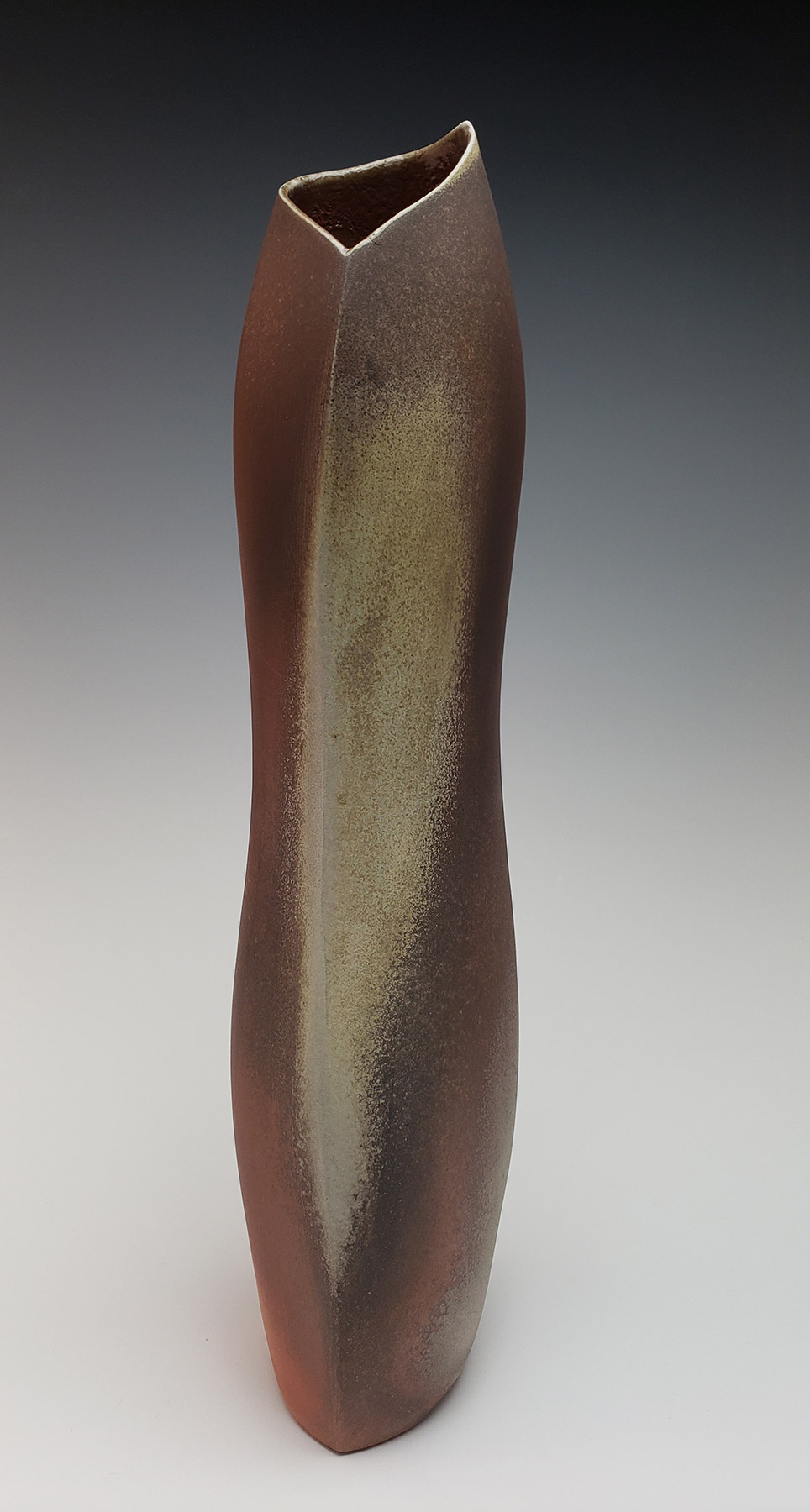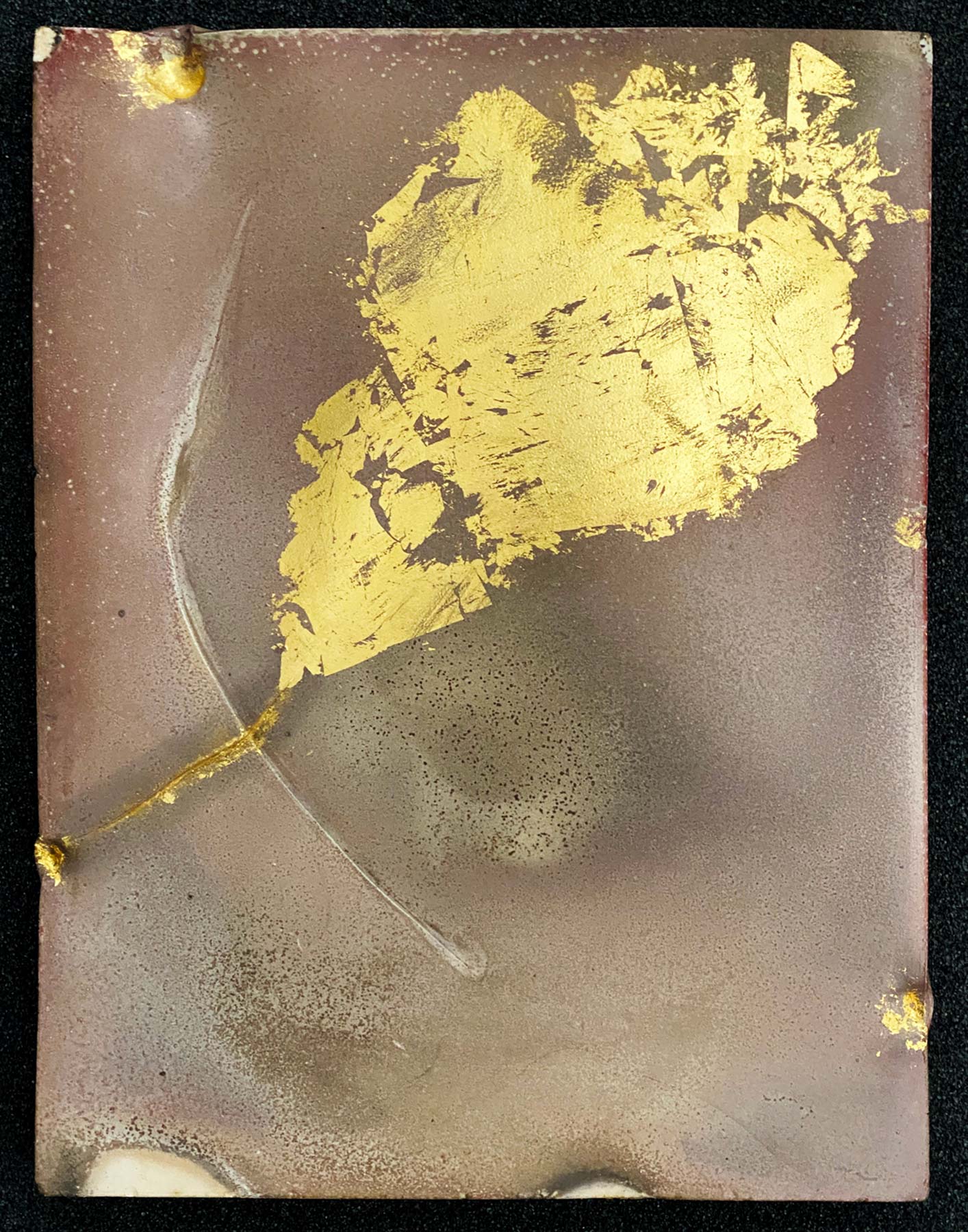
Nate Hunter, Kenosha
2020–21 RAM Artist Fellowship Award Recipient
Ceramic artist Nate Hunter is based in Kenosha, Wisconsin. He studied at the University of Wisconsin-Parkside, where he received his BA with a double emphasis in ceramics and sculpture. Hunter spent two years after college apprenticing with ceramic artist, Chris Gustin, where he fell in love with the process of making and firing ceramics in large wood-fired kilns.
In addition to teaching and exhibiting his work, Hunter revels in working with clay. He states: “Each piece shows evidence of the harsh environment in the kiln. Many carry scars and marks from the hot wood ash landing, and melting, on the pots. This work points out that even though the environment is harsh–the work was designed to survive, and become stronger because of the struggle.” Hunter’s current obsession is with building a new type of wood-fired kiln. This kiln will allow him to paint with fire and ash to produce new and “wild” effects on his ceramic pieces.
Artist Statement
The process of making and working with clay is very important to me. Each step is significant, with its own meaning, its own purpose.
Within the Evidence Series, I have worked to capture the essence of flame and ash from the kiln. These pieces’ endeavor to show that what scars us can be made into something that is beautiful.
Every one of these works tell a story, showing evidence of the process of creation. Blemishes from the firing imbue each piece with its own character. The flame patterns show where each was placed in the kiln, as well as its proximity to the firebox. Marks appear from where material was carefully arranged to prevent sticking to the kiln shelf. The colors on the works are the result of the reaction between clay, ash, and fire.
I see each piece as evidence—proof that even though the kiln is a harsh place, it is a situation where there is dramatic and permanent change. Without it, every work would be too weak and break under its own weight.
2020 was fraught with difficulties and hardships. In time, we will look back and see that it was tumultuous but fruitful. It is my hope that these pieces will help the viewer gain a new perspective—to consider their flaws not as faults, but as beauty marks.
Nate Hunter, Kenosha
2020–21 RAM Artist Fellowship Award Recipient

Photography: Camela Langendorf, Varitay Studios
Ceramic artist Nate Hunter is based in Kenosha, Wisconsin. He studied at the University of Wisconsin-Parkside, where he received his BA with a double emphasis in ceramics and sculpture. Hunter spent two years after college apprenticing with ceramic artist, Chris Gustin, where he fell in love with the process of making and firing ceramics in large wood-fired kilns.
In addition to teaching and exhibiting his work, Hunter revels in working with clay. He states: “Each piece shows evidence of the harsh environment in the kiln. Many carry scars and marks from the hot wood ash landing, and melting, on the pots. This work points out that even though the environment is harsh–the work was designed to survive, and become stronger because of the struggle.” Hunter’s current obsession is with building a new type of wood-fired kiln. This kiln will allow him to paint with fire and ash to produce new and “wild” effects on his ceramic pieces.
Artist Statement
The process of making and working with clay is very important to me. Each step is significant, with its own meaning, its own purpose.
Within the Evidence Series, I have worked to capture the essence of flame and ash from the kiln. These pieces’ endeavor to show that what scars us can be made into something that is beautiful.
Every one of these works tell a story, showing evidence of the process of creation. Blemishes from the firing imbue each piece with its own character. The flame patterns show where each was placed in the kiln, as well as its proximity to the firebox. Marks appear from where material was carefully arranged to prevent sticking to the kiln shelf. The colors on the works are the result of the reaction between clay, ash, and fire.
I see each piece as evidence—proof that even though the kiln is a harsh place, it is a situation where there is dramatic and permanent change. Without it, every work would be too weak and break under its own weight.
2020 was fraught with difficulties and hardships. In time, we will look back and see that it was tumultuous but fruitful. It is my hope that these pieces will help the viewer gain a new perspective—to consider their flaws not as faults, but as beauty marks.
Interview with the Artist, January 2021
Would you please describe your work—what materials you use; what subject matters you explore?
I primarily work in ceramics and fire with wood, which imparts flame and color effects that can be had with no other form of firing. I have been using these unique formal elements as a way to explore the pain, scars, and marks that life brings to us. In my investigation, I have learned one major thing—the objects I created were designed to survive the torturous flame and heat. This has encouraged me in the last year—[I see the pots as metaphors for humanity and realize that] these trials will pass and, just like the pots after the firing, we will be stronger for it.
How often are you in your studio? Do you work outside of your studio much or at all?
I try to be in my studio a little every day. The business requires me to wear many hats but I treasure my time working. This last year has required me to ply my skills as a handyman but the fellowship has helped me stay the course and pursue new directions.
What inspires you most these days? But also what do you go to bed thinking about most nights?
I have been fully wrapped up in the idea of building an experimental wood-fired kiln. My new design will help me to learn the process and experiment with new and exciting techniques. I plan on using the fellowship money to buy the materials I need to build the kiln.
Sample of Work
Click/tap an image for more information
Stay in Touch
The Racine Art Museum and RAM’s Wustum Museum work together to serve as a community resource, with spaces for discovery, creation, and connection. Keep up to date on everything happening at both museum campuses—and beyond—by subscribing to our email newsletter:









